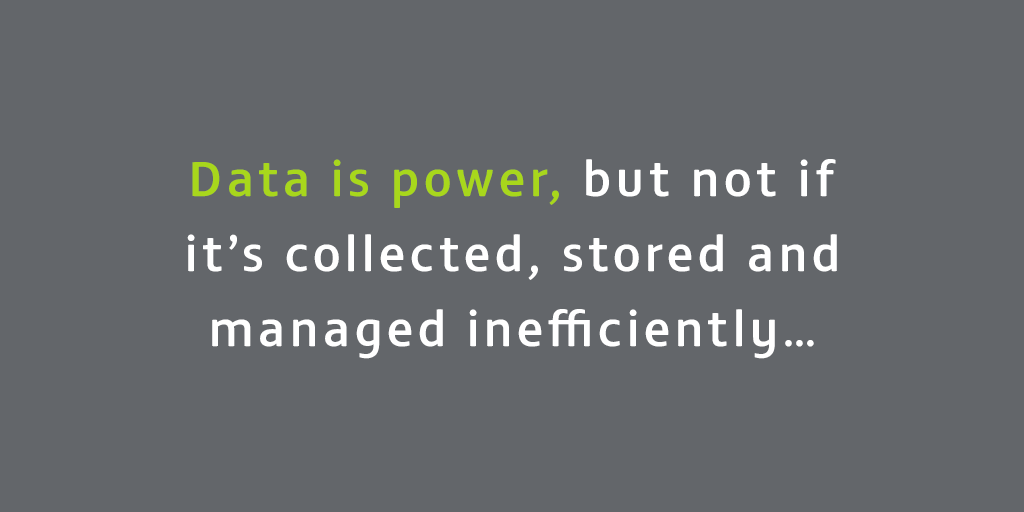Four opportunities to transform your digital CX for PR19 and RIIO
Written by Robyn Jones
Customers expect brands to demonstrate ease, agility and excellence in every interaction—and utilities providers are no exception.
Regulators are responding to this shift, increasing their demands on utilities companies to enhance their customer experience. Ofwat’s latest price review (PR19) and Ofgem’s recent price control frameworks (RIIO and RIIO-2) are a clear call for companies to raise standards, innovate, and future proof.
These shifting demands mean utilities providers must adapt in order to survive and thrive. And in a growing population of ‘digital-first’ mindsets, technology holds the key.
Here are four clear opportunities for PR19 and RIIO:
1. Manage customer data
Utilities companies hold data on millions of customers, yet all too often this vital resource is held in silos. It’s also often inaccurate or out of date, unable to provide the insights needed to drive positive actions.
Data is power, but not if it’s collected, stored and managed inefficiently…
Single Customer View
By bringing multiple data sets together, companies can create a ‘single customer view’. This is a perspective that allows them to see the entire customer journey, regardless of the channel used.
Enabling this visibility empowers organisations to quickly and easily identify pain points, such as where customers commonly fail to complete a desired action, or where they feel the need to seek help. It can also highlight crucial opportunities to add value, cross-sell or up-sell.
According to Oracle, billing is the cause of a full 30-50% of all calls to utility contact centres. Suppliers can tackle this costly pain point by identifying when customers have used more energy or water than normal, and forewarning them about unexpected billing charges—simultaneously supporting PR19’s commitment to help customers who are struggling to pay.
With both PR19 and RIIO demanding that suppliers improve customer communications, better management of customer data can have a transformational effect.
GDPR
The EU’s new General Data Protection Regulation (GDPR) came into force in May 2018. It presented an opportunity for businesses to better organise their data, ensuring it’s accurate and easily accessible. It also obliges companies to capture, store and manage their data securely.
“GDPR is a positive move, allowing you to be compliant and to manage that compliance.” - Paul Fennemore, CX and Digital Marketing Consultant, Sitecore.
Companies with well-managed data will tap into its power to benefit both customers and the overall business.

2. Personalise content and information
Enabling personalisation is a key benefit of digital. From communicating through a customer’s preferred channel, to delivering relevant content or tailored offers, digital provides a platform for companies to massively enhance the customer experience.
Econsultancy figures show that 94% of companies experience an uplift in conversion rates by using website personalisation. From greeting website visitors with the best available tariff based on their real-time usage, to presenting them with water saving tips when they exceed their normal water consumption, personalisation offers a sizeable opportunity to add value.
It can also enable self-service by presenting customers with a personalised view of their account. Not only does this promote trust and encourage economical consumption, it pre-empts customer needs and queries, which helps improve customer convenience and lessens the demand on call centres.
3. Communicate efficiently and accurately
We know that today’s customers expect to be able to contact their utilities providers on a channel that is convenient and familiar to them—like Facebook Messenger, Twitter or email. They also want to interact at a time of their choosing. Utilities companies can meet these growing expectations by using digital to provide a prompt, helpful response on the customer’s terms.
Customer journey mapping
Individual customer actions can be the key to identifying pain points and highlighting areas for improvement, whether this is a tweet enquiring into planned maintenance, or a call to query a bill. By detailing a customer’s every interaction with the company, organisations can better understand customer behaviour.
Maximum engagement
Data helps companies build a picture of customers and their lifestyles. It enables them to better understand people’s needs and priorities when it comes to energy ethics and usage. This means providers can better engage with customers, start an informed conversation and offer personalised advice with relevant information.
Companies can ‘secure customer loyalty by proactively offering actionable information’, assisting them in accomplishing their customer engagement goals. - PwC
Customer sentiment analysis
Understanding exactly what customers think of a company and its services - and why - is key to making decisions with customer experience at the forefront. This involves monitoring every channel, from contact centres to social networks, blogs, forums and websites. Such intelligence enables companies to make decisions based on hard data and respond quickly to customers where necessary.
By understanding how the overall customer journey can be streamlined, companies can identify where to focus their resources, and how to better meet customer needs.
“Recognise that different customers like different ways of interacting, and don’t just offer a one-size fits all solution. Whatever option I choose as a customer, I should be able to get my needs met.” - Joey Moore, Director of Product Marketing at Episerver
Both PR19 and RIIO-2 emphasise the need for better customer service, and improved communication is critical to achieving this.

4. Implement artificial intelligence (AI)
With Pegasystems reporting that every top performing company is currently using AI in some form, the potential of this technology speaks for itself.
Broadly speaking, AI enables computers to imitate human intelligence, learning in order to make tasks faster, cheaper, or, as Jonathan Seal, Strategy Director, Mando says, “just possible.”
AI is increasingly forming the backbone of many burgeoning technologies, including:
- Chatbots: Chatbots driven by AI enable companies to provide intelligent 24/7 customer service, supporting customers with standard queries, at scale. Natural language processing has vastly improved the sophistication of bots, enabling them to understand the numerous different ways in which people word questions, providing the right information in response.
- Intelligent search: Intelligent search uses natural language recognition to interrupt the user’s search journey and promptly present highly relevant content by understanding the intent behind the user’s search query.
- Home assistants: From Amazon Echo and Google Home to Apple HomePod, voice-activated digital assistants are increasingly popular in people’s homes. This presents opportunities for providers to develop capabilities for these assistants, and a number of connected home specialists have already entered this space. As voice recognition becomes more sophisticated, the potential for home assistants will increase.
Innovation is a key focus of both PR19 and RIIO, and AI underpins many emerging technologies that have the potential to enhance and even transform the way utility providers engage with customers.
Transform your digital experience
Times are changing for utilities companies. Providers that fail to adapt and respond to the demands of customers and pressures from regulators, will fall short when it comes to delivering the digital experience that is expected of them.
What else is going on
-
March 2024
Ghost Spam in GA4 – How to Spot and Deal With It
How to spot and deal with ghost spam in Google Analytics 4 (GA4) to safeguard your data insights. Implement proactive measures to maintain data accuracy.
-
November 2023
Mando to bridge skills gap at BIMA Digital Day
The BIMA Digital Day on November 8th is an attempt to bridge this skills gap, as eight of Mando's experts will spend time with around 240 Year 10 students from The Studio School at their Liverpool campus.


